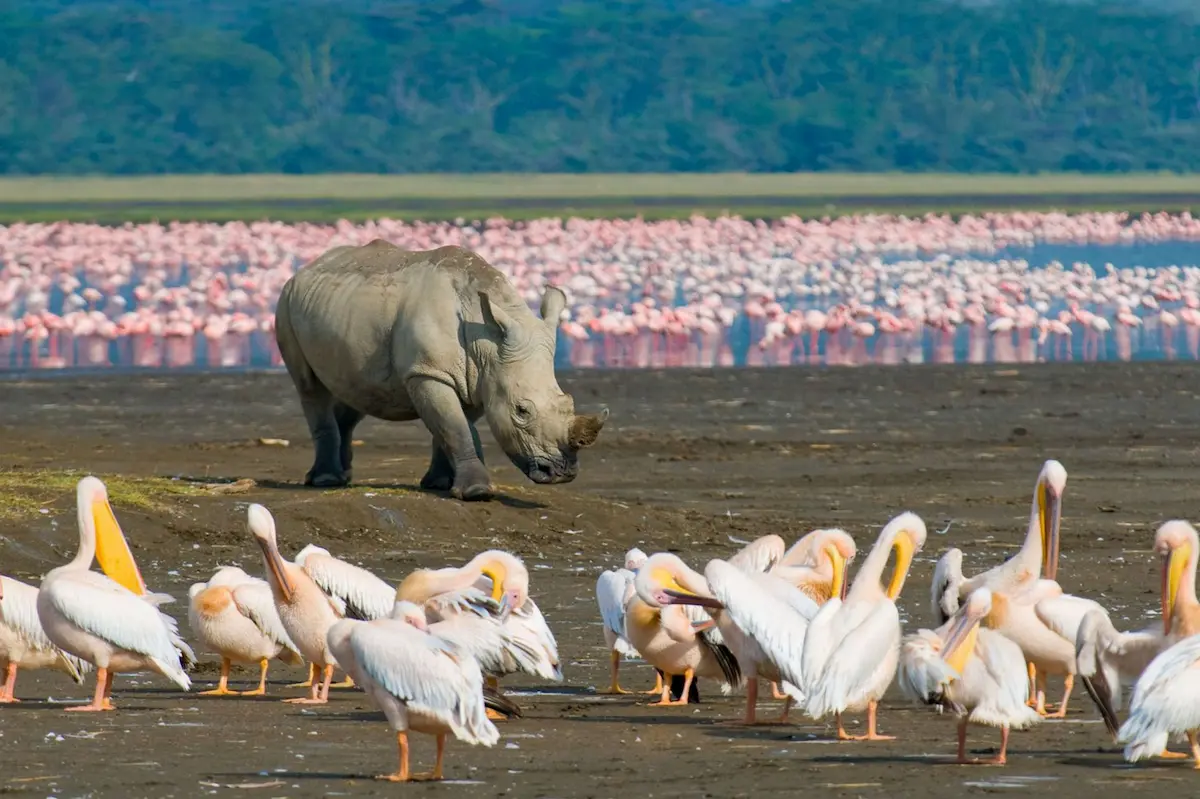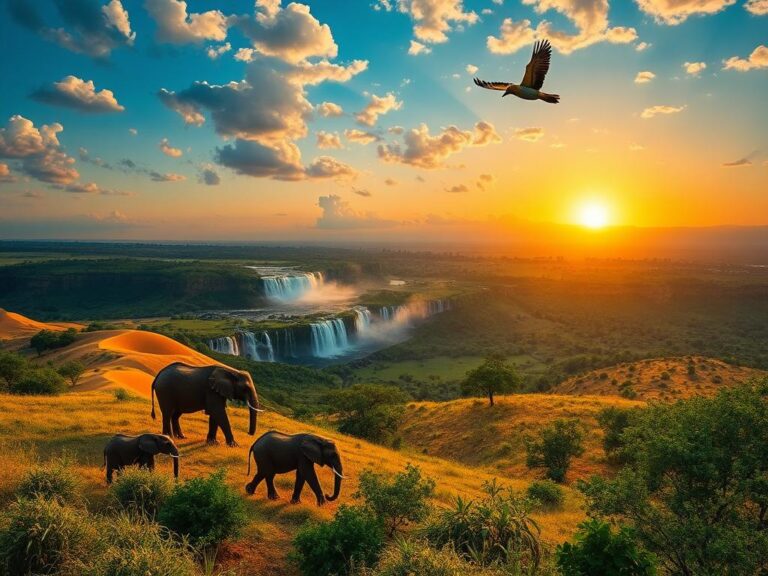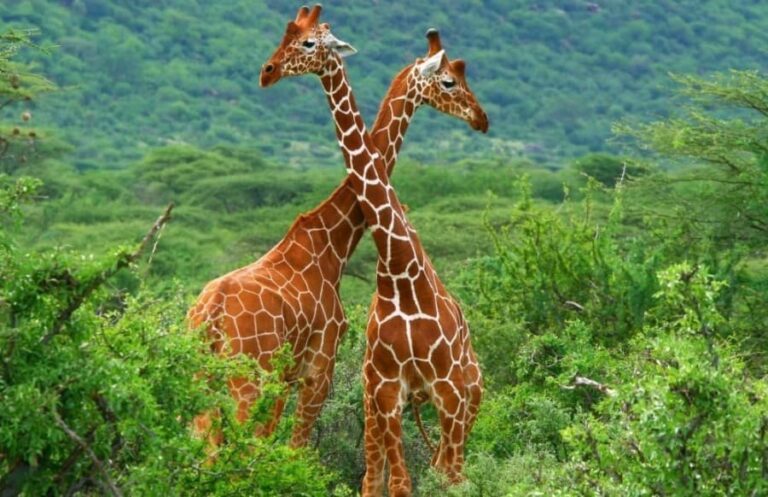
Best Safari in the World: Discover the Ultimate Wildlife Adventures
Best safari in the world is an experience unlike any other, immersing you in nature’s most magnificent spectacles.
From the sweeping savannas of Africa to lush wetlands and breathtaking landscapes, safaris offer a chance to witness wildlife in their natural habitats.
Whether you’re an experienced adventurer or new to the thrill of a safari, the journey promises unforgettable memories.
In this article, we will explore some of the world’s best safari destinations that cater to wildlife enthusiasts, offering unique experiences and encounters with animals in their ecological realms.
Join us as we uncover the best safaris, providing insights into what makes each destination special and why they should be on your bucket list.
Serengeti National Park, Tanzania
Renowned for the annual Great Migration, the Serengeti National Park is where you will witness millions of wildebeests and zebras traversing the plains.
This epic journey plays out each year as herds follow the rains to find better grazing lands, making it one of the best wildlife spectacles on Earth.
Here, visitors have the chance to embark on guided game drives or even soar above the plains in hot air balloons for breathtaking aerial views.
The park is teeming with fascinating wildlife, including lions, elephants, and a plethora of bird species.
The Serengeti’s ecosystem is so diverse that UNESCO designated it as a World Heritage Site, ensuring its preservation for future generations.
According to a study done by the Tanzanian Tourism Board, over 350,000 tourists flock to the Serengeti each year, especially during the migration period.
“As a photographer, the Serengeti was always on my bucket list,” says acclaimed wildlife photographer, Michael McAllister.
“The moment I saw the herds of wildebeest rolling across the plains, it left me speechless.”
If you’re a wildlife photographer or simply want to witness nature’s beauty, this destination should be on your radar.
Kruger National Park, South Africa
One of Africa’s largest game reserves, Kruger National Park offers a truly immersive experience.
Home to the Big Five—lions, leopards, elephants, buffalo, and rhinos—this park promises a rich biodiversity that captivates any wildlife enthusiast.
With a mix of self-drive options and guided tours, there’s flexibility in how you explore the park’s vast landscapes.
The park spans nearly 19,500 square kilometers, providing ample opportunities for both day and night drives, allowing for diverse wildlife sightings at various times.
The park also boasts a network of rest camps and luxury lodges, ensuring that you can relax in comfort after a thrilling day of exploration.
Kruger National Park has become a vital part of South Africa’s economy, with nearly 1.5 million visitors each year contributing to conservation efforts.
“The joy of encountering wildlife up close is unmatched,” shares wildlife guide Thandi Mbatha.
“The magic of Kruger is that it is accessible to everyone, regardless of their experience levels.”
Whether you’re looking for selfies with a lion in the background or want a chance to spot a rare bird, Kruger offers a range of gorgeous scenes.
Maasai Mara National Reserve, Kenya
Famous for its annual wildebeest migration as well as its large populations of lions and cheetahs, the Maasai Mara offers a rich tapestry of wildlife experiences.
The third-largest national park in Kenya, it’s characterized by an impressive landscape of open grasslands and riverine forests that are home to diverse animal populations.
Visitors can stay in luxurious tented camps that offer immersive experiences right in the heart of nature, sometimes even being serenaded at night by the calls of wild animals!
The opportunities for safari experiences here range from game drives to cultural experiences with the Maasai people, who are native to this magical land.
“When I became a guide, I always wanted to take people into the Maasai Mara,” recalls James Njoroge, a local guide.
“The thrill of seeing big cats in the wild is exhilarating, but sharing the culture of my people is equally important.”
The Maasai Mara is not only a wildlife haven — it’s also a place to learn about the local traditions and customs that have preserved the land and its biodiversity.
Chobe National Park, Botswana
Chobe National Park is famous for its massive elephant herds and picturesque surroundings alongside the Chobe River.
With diverse ecosystems ranging from floodplains to woodland, it offers myriad opportunities for wildlife viewing.
One of the unique aspects of Chobe is that visitors can experience boat safaris on the river, allowing for up-close encounters with animals like hippos and crocodiles from a different perspective.
The sunsets over the river are often described as breathtaking and a perfect way to end your day on safari.
Chobe is also known for night drives, providing a chance to see elusive nocturnal species.
“Boat safaris are one of the highlights for our clients,” shares safari host, Salome Kirabo.
“They get a chance to watch elephants drinking at the riverbank as the sun sets — it’s magical!”
Chobe National Park is not just about the wildlife; it’s about experiencing the beauty of Botswana in its purest form.
Yellowstone National Park, USA
While not a traditional African safari, Yellowstone National Park presents ample opportunities for wildlife watching with its rich array of species.
Home to bison, elk, bears, and wolves, Yellowstone showcases the diverse ecosystems that define the American West.
Visitors can join guided wildlife tours that delve into Yellowstone’s unique geological features while also pointing out fascinating animal behaviors.
The park, with its geothermal wonders, offers a distinctive combination of wildlife observation and spectacular natural scenery.
The impact of wildlife tourism in Yellowstone is significant, generating millions of dollars that fund conservation projects.
“Yellowstone is about blending the experience of geology with wildlife,” explains park ranger Lisa Collins.
“It’s where you can see animals thriving in their natural environments amidst geysers and striking landscapes.”
Whether you’re interested in the thrill of spotting a gray wolf or simply enjoying the serenity of the landscape, Yellowstone promises a memorable adventure.
Okavango Delta, Botswana
A UNESCO World Heritage site, the Okavango Delta is a unique ecosystem that floods seasonally and creates a rich habitat for countless wildlife species.
Helicopter safaris and mokoro boat tours provide different ways to explore this mesmerizing landscape.
Visitors can glide across water lilies while observing wildlife from a peaceful canoe — it’s an unforgettable experience with lush surroundings.
The Delta is home to species such as elephants, hippos, and numerous bird species, making it a paradise for wildlife photographers.
What sets the Okavango Delta apart is its pristine condition; the area is renowned for its conservation efforts, ensuring that wildlife thrives.
“Every corner of the Delta has a story,” states conservationist Faizal Juma.
“It’s a delicate balance between nature and conservation, and it’s our job to protect it.”
If you’re looking for serenity and immersion in nature, add the Okavango Delta to your travel plans.
Antelope Canyon, USA
While not a conventional wildlife safari, Antelope Canyon provides nothing short of adventure.
The stunning slot canyons, shaped by ancient water flows, present a visual feast of twisting sandstone formations and vibrant colors.
For those intrigued by geology and landscape photography, hiking through Antelope Canyon is a must.
“Exploring Antelope Canyon is like walking through a living painting,” describes photographer and tour guide Mark Atkinson.
“Each light beam that filters down creates a magical atmosphere.”
It’s a perfect complement to wildlife safaris, showcasing a different side of Mother Nature’s beauty.
Ranthambore National Park, India
Known for its rich tiger population, Ranthambore National Park is one of the best places to spot Bengal tigers in their natural habitat.
The blend of ancient ruins and diverse flora makes this park unique, allowing for a thrilling experience as you explore its landscapes.
You can participate in both jeep and canter safaris, which offer visitors various opportunities to catch glimpses of these majestic creatures.
Aside from tigers, the park also boasts leopards, deer, and various bird species, making it a repository of biodiversity.
Galápagos Islands, Ecuador
The Galápagos Islands, while different from a traditional safari, offer unique wildlife encounters.
With species like giant tortoises and blue-footed boobies, the islands are a hotspot for biodiversity and evolution.
Cruises through the islands allow travelers to explore various terrains and ecosystems, enhancing the adventure with snorkeling and hiking options.
“For anyone who loves wildlife and adventure, the Galápagos offer an otherworldly experience,” notes ecologist Dr. Emiliano Javier.
“You’re walking the same grounds as Charles Darwin once did.”
This remarkable archipelago should not be missed; it showcases the wonders of nature in an extraordinary setting.
Conclusion
In conclusion, the best safari experiences in the world offer incomparable encounters with wildlife and breathtaking landscapes.
From the Great Migration in the Serengeti to the intricate ecosystems of the Okavango Delta, each destination provides unique narratives and opportunities for exploration.
Whether you’re an experienced traveler or a newcomer eager to venture into the wild, these safaris promise unforgettable experiences that will remain in your heart for years to come.
So, pack your bags, grab your binoculars, and set off on the adventure of a lifetime.
FAQ
What is the best time of year for a safari?
The best time for a safari varies by destination, but generally, the dry season (May to October) is preferred for wildlife viewing, as animals tend to gather near water sources.
Always check specific recommendations for each location to maximize wildlife encounters.
Are safaris safe for families with children?
Many safari operators provide family-friendly options, including specially designed vehicles and guides trained to cater to younger audiences.
Research and choose a company experienced in family safaris to ensure safety and enjoyment.
What should I bring on a safari?
Essentials include a good pair of binoculars, a camera with extra batteries, sunscreen, insect repellent, comfortable clothing, and a hat.
Staying hydrated is crucial, so a reusable water bottle is also recommended.
Can I take photos during a safari?
Photography is encouraged, but it’s important to respect the animals and their habitats.
Avoid flash photography if it may disturb the animals, and always stay within the vehicle unless directed by your guide.
What is a mokoro safari?
A mokoro safari involves gliding through waterways in a traditional dugout canoe known as a mokoro.
This peaceful experience allows you to observe wildlife from a unique vantage point while appreciating the stunning landscapes of wetlands.
We hope this comprehensive list helps enhance your understanding and excitement around the best safaris in the world!
Feel free to share your experiences or ask any questions in the comments section below.


